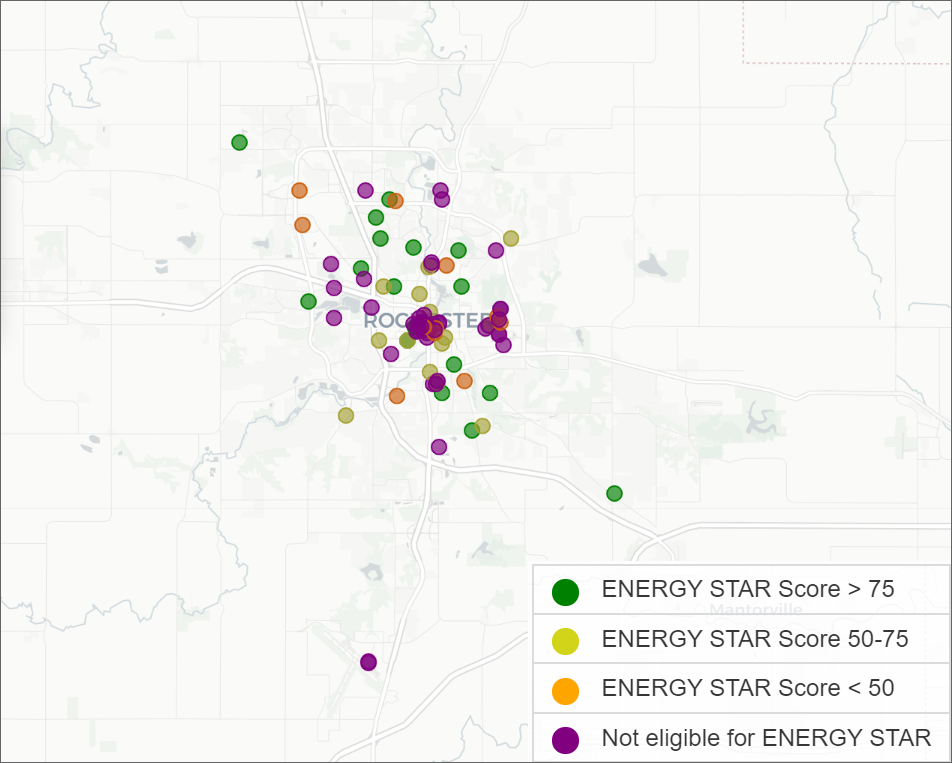During 2019, 90 buildings, most of them publicly-owned, participated. They can be seen on the map below. Energy and water consumption for these buildings was tracked and compared to the national average of buildings with the same type of use. The 2019 buildings represent 11% of Rochester’s total energy use, and 5.6% of the city’s Green House Gas Emissions. The majority of them are owned by 5 entities: The City of Rochester, Olmsted County, Rochester Public Schools, Rochester Community and Technical College, and The Mayo Clinic. Data for the participating facilities can be seen at the efficient buildings interactive map, also featured below.
Rochester, MN has kicked off its 2nd year of participation in the Minnesota Efficient Buildings Collaborative and is hoping to add 20 new buildings to the Sustainable Rochester Building Energy Benchmarking program for 2020.
It is said that you can’t manage what you don’t measure, and this is one of the primary benefits of tracking energy use.
By comparing use to similar buildings, owners or managers gain insights that, on average helps them reduce energy use by 1-3% annually. For renters or potential buyers, this brings what are now “externalities” into the market. Energy consumption is becoming increasingly important for both environmental concerns and because of operating costs, and providing public access to that data allows consumers and policy makers to use it in their decision making.
Some of the key takeaways for the first year:
- The benchmarked buildings had a better Energy Star score than the median average for the country. Rochester buildings had a median score of 72, while the national median average was 50. The higher the score, the better the performance and the less energy that is used in daily operations.
- The age of Rochester’s buildings is not an indicator of how well they will perform.
- Already at least one of the participants experienced significant savings when the results helped them to determine that parts of the building were being conditioned even during periods that it was unoccupied.
Increasing participation
Rochester is looking for 20 additional buildings, which can be commercial, multifamily, or public, for the 2020 season. There is no cost to participate. Participants will get help starting their benchmarking journey and support along the way.
Partners in energy savings
The Minnesota Efficient Buildings Collaborative has been supported by the non-profit Center for Energy and Environment (CEE) and has participants that include Hennepin County and the cities of Saint Paul, St. Louis Park, and Rochester. Participants benchmark with the US DOE Energy Star Portfolio Manager tools. Learn more about the program, participation, and the tools.
Related Tools & Guides
We encourage reuse and republishing of this article. All Clean Energy Resource Teams news posts are made available under the Creative Commons Attribution license, meaning you can share and adapt the work as long as you give us credit. We'd also love it if you link back to the original piece. Have questions or want to chat? Drop us a line.



